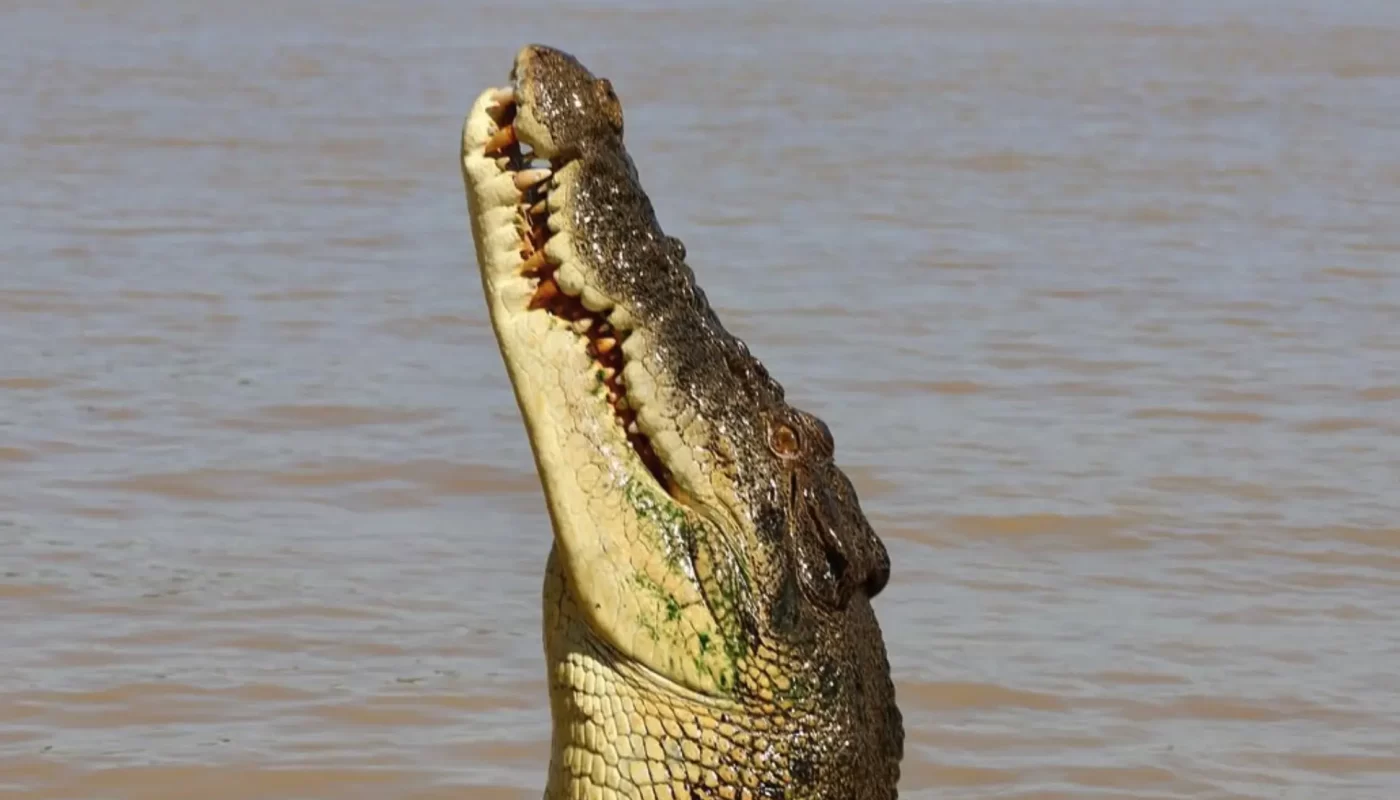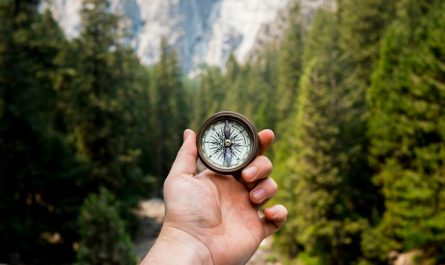Jumping crocodiles, more commonly known as saltwater crocodiles (Crocodylus porosus), are perhaps the most popular crocodile species. They mainly inhabit the waters and rivers of Australia’s Northern Territory and are renowned for their ability to ‘jump’ out of the water to catch food. Using their strong limbs and tails, which help in both movement and control, these crocodiles can leap considerable heights to snatch birds or other animals from tree branches. The spectacle of these jumping crocodiles is a highlight of the region, drawing significant tourist appreciation. To experience these remarkable behaviors firsthand, many visitors participate in the Jumping Crocodile Tour, which offers a safe and exciting way to observe these powerful creatures in their natural habitat.
Crocodile Physiology: Built for Survival
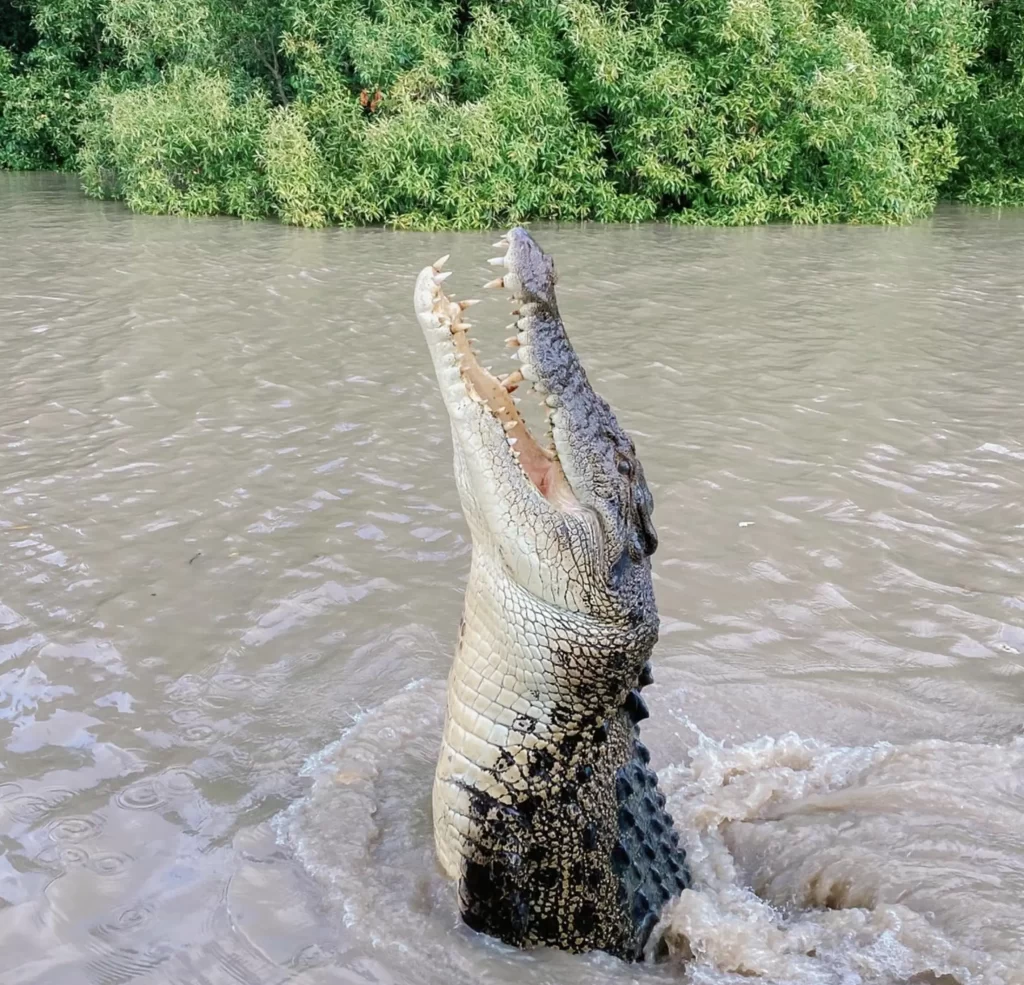
As should be expected of the saltwater crocodile, these species also possess unique skin basked in features which enhance their modus operandi as an apex predator. One of the most significant of these external modifications toot has the thick skin which is armored and similar to reptiles with an external layer of bony bolts called osteodermis. Such facial bones serve not only as a protection from injury but also facilitate thermoregulation. This is important for crocodiles which are ecothermic cold blooded, because they are dependent on other environmental aspects in terms of thermoregulation, which is essential for survival.
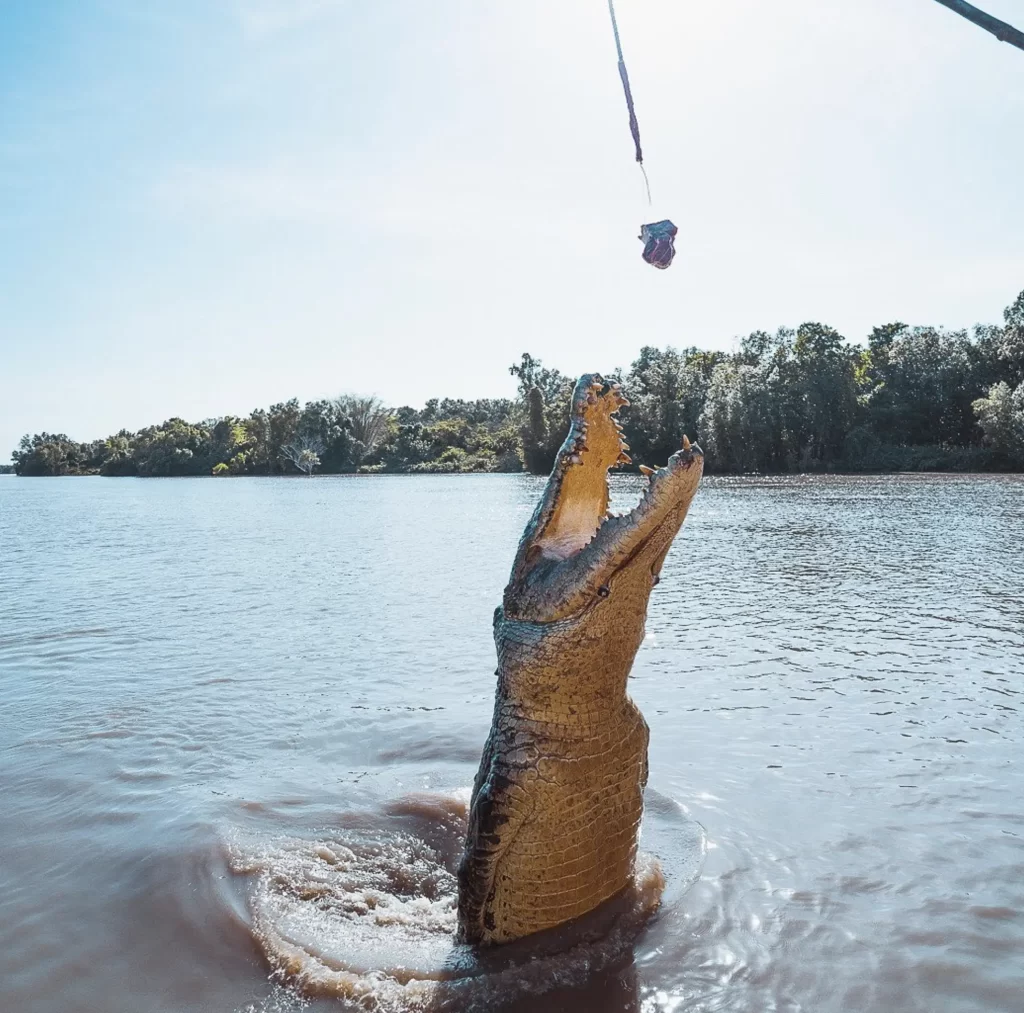
Crocodiles also have one of the deadliest bites among animals. The construction of their jaw muscles makes it possible for them to exert quite a lot of closing force which enables them to break her prey’s bones. On the contrary, the muscles used for opening the jaw are weak hence a person can use his or her hands to keep the mouth of a crocodile closed. Once those jaws are shut though the crocodile is able to exert more than 3700 pounds of pressure intracranially making them the animal kingdom’s hardest biters. This trait can be noted in Nile crocodile (Crocodylus niloticus) as well as Cuban crocodile (Crocodylus rhombifer) but Crocodylus porosus bites the hardest.
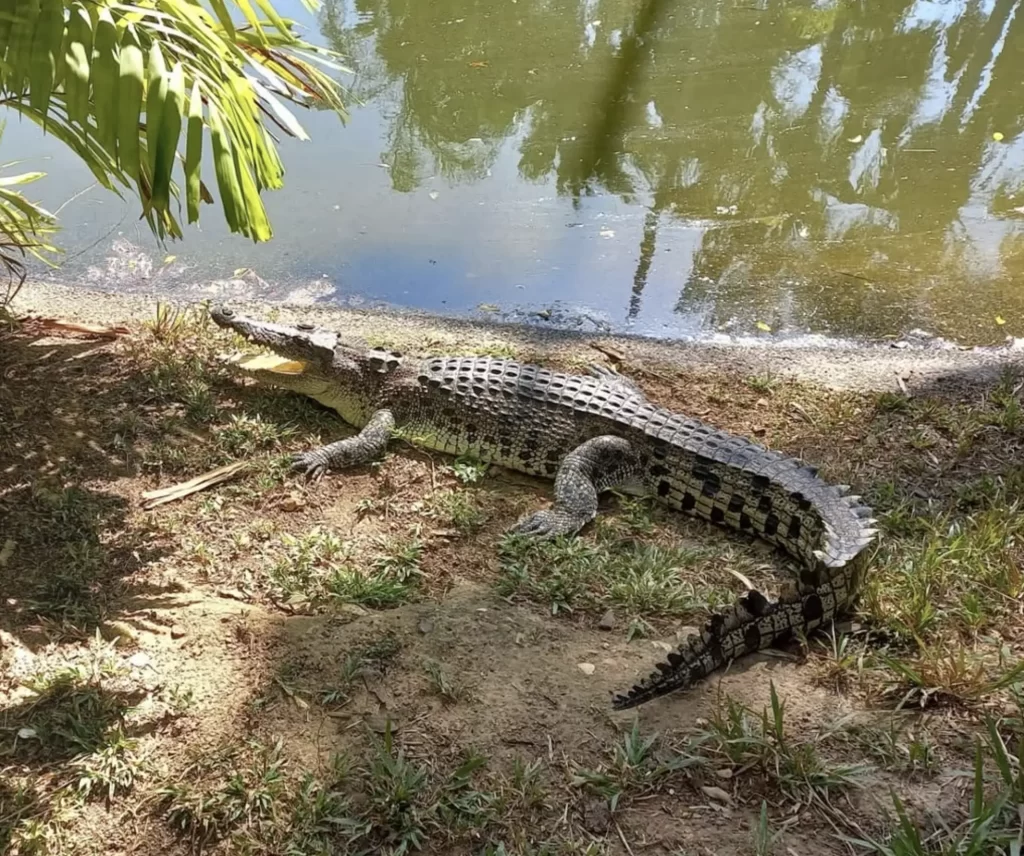
Adaptation to Saltwater and Freshwater Environments
As the name suggests, saltwater crocodiles have an amazing ability to tolerate both freshwater and saltwater environments. This makes them different from their relatives dwelling in freshwater such as the Johnston’s crocodile (Crocodylus johnstoni) from the northern regions of Australia. Saltwater crocodiles are adapted to brackish water and hence prefer inter-tidal estuaries and mangrove swamps. Salties have special salt-ejecting organ on the tongue which enables them to metabolize into brackish striped mangoes estuaries and pulp waters of the Pacific Ocean.
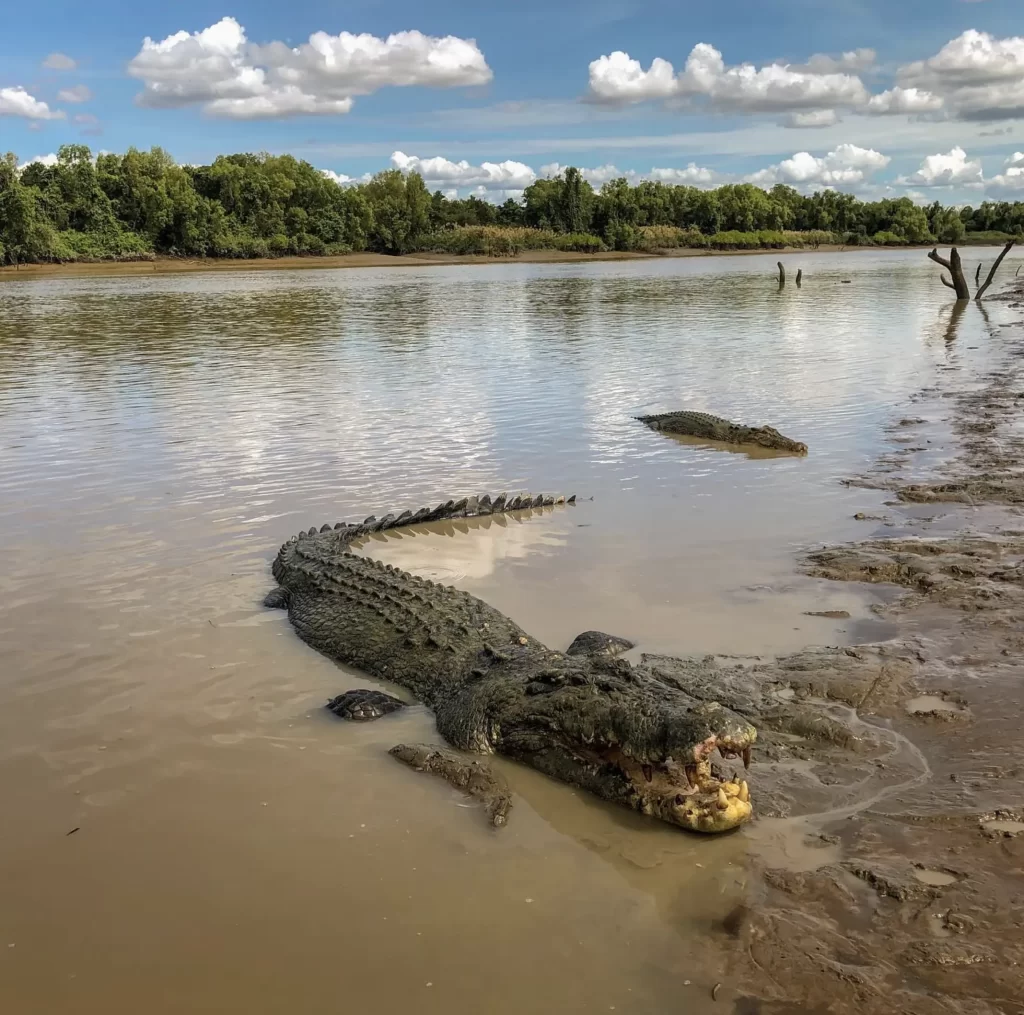
Their mobility, attuned to habitat characteristics, makes them very effective hunters. They can even be submersed in shallow waters stagnant amongst foliage and, as a result, are very hard to detect by animals at the shore. This ambush technique is coupled with their ability to hide under water, in the mud or insipid waters, waiting for the right moment to attack. Such ability to exist in more than one phytogeographical region has led them to become the top class predators and and managed to keep ecosystems free of over population of fish, birds and mammals.
Evolutionary History and the Role of Temperature Regulation
A crocodile is one of the oldest survivors reptiles whose ancestry is traced to prehistoric times when dinosaurs roamed the earth. As millions of years rolled by, they has changed with the times adjusting to new climatic conditions and environments. One particular adaptation which is of paramount importance to them in the wild is known as behavioral thermoregulation which means that crocodiles are able to control their temperature by moving from hot areas to cool areas. When it is not hot anymore, and it usually cools down during certain hours of a day, or just down, crocodiles are known to sit motionless basking in the sun and, swallowing heats with their dark tanned skin as the ‘super absorber’ layer. When the body of a crocodile needs .5 blows of hot air to 1 extremity the crocodile goes under the hot itself tears off the pieces.
Surviving in a temperature gradient is a characteristic which can be found in most of the species of crocodiles as a result of evolutionary development. The Cuban crocodile for example, and the American alligator have similar strategies to thermoregulate in their different environments. This geographical flexibility has assisted in the survival of the crocodiles for over millions of years even during harsh climatic conditions that obliterated a good number of species.
Sensory Adaptations: A Keen Awareness of Their Surroundings
Also, hopping crocodiles take up different sensory adaptations in order to be efficient predators. Their eyes. which are located on the top of the bull head enable them to immerse almost all their bodies and only expose the head above the water to fix on the prey. Such is common among other crocodilian species like the American crocodile (Crocodylus acutus) and African dwarf crocodile (Osteolaemus tetraspis) who also have this adaptation when hunting.
Another striking feature of the crocodiles is the presence of the specialized structures called integumentary sense organs, embedded at the sides of the jaw. These pits help them feel the direction and movement of very low sound waves elicited by, for example, a struggling fish or another moving prey, allowing them to capture their meals even in the complete absence of light. This ‘sixth sense’ is particularly beneficial for animals such as crocodiles, which feed mostly at night. They also have great ability to switch between day and night hunting.
Unique Hunting Strategies: The Art of Ambush and Jumping
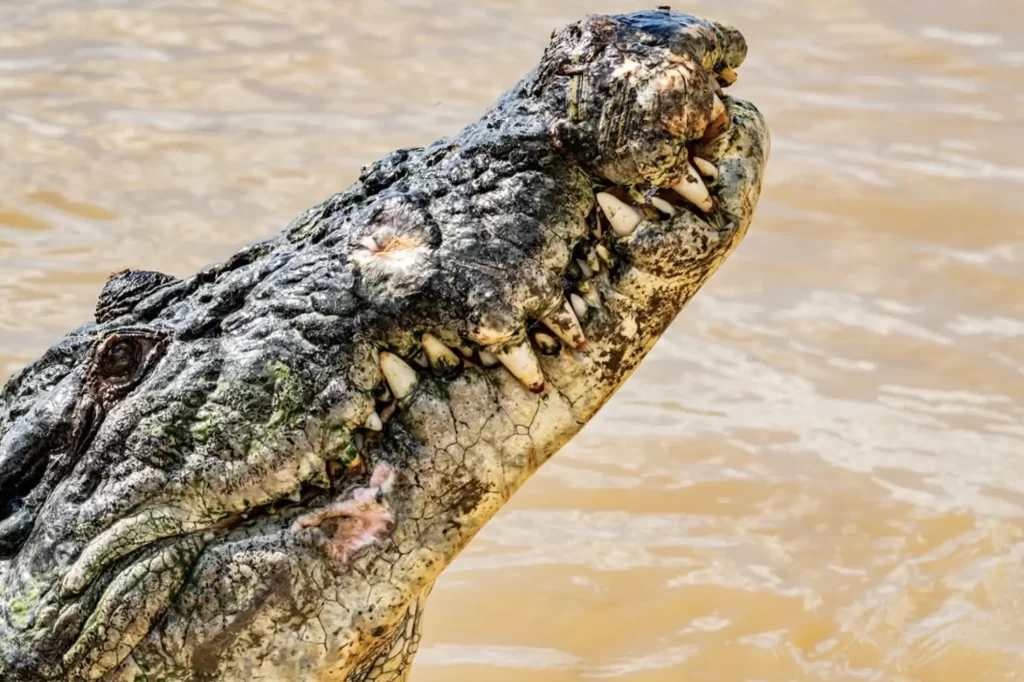
The jumping crocodiles have a distinctive feature whereby these creatures are able to jump out of the water in order to try and catch prey. It is especially common to this species of tropical salt water Crocodile but, other species have been seen doing it as well. Crocodiles extend their strong tails and thrust their bodies entirely out of the water to reach birds or mammals resting on low branches or flying above them at any distance.
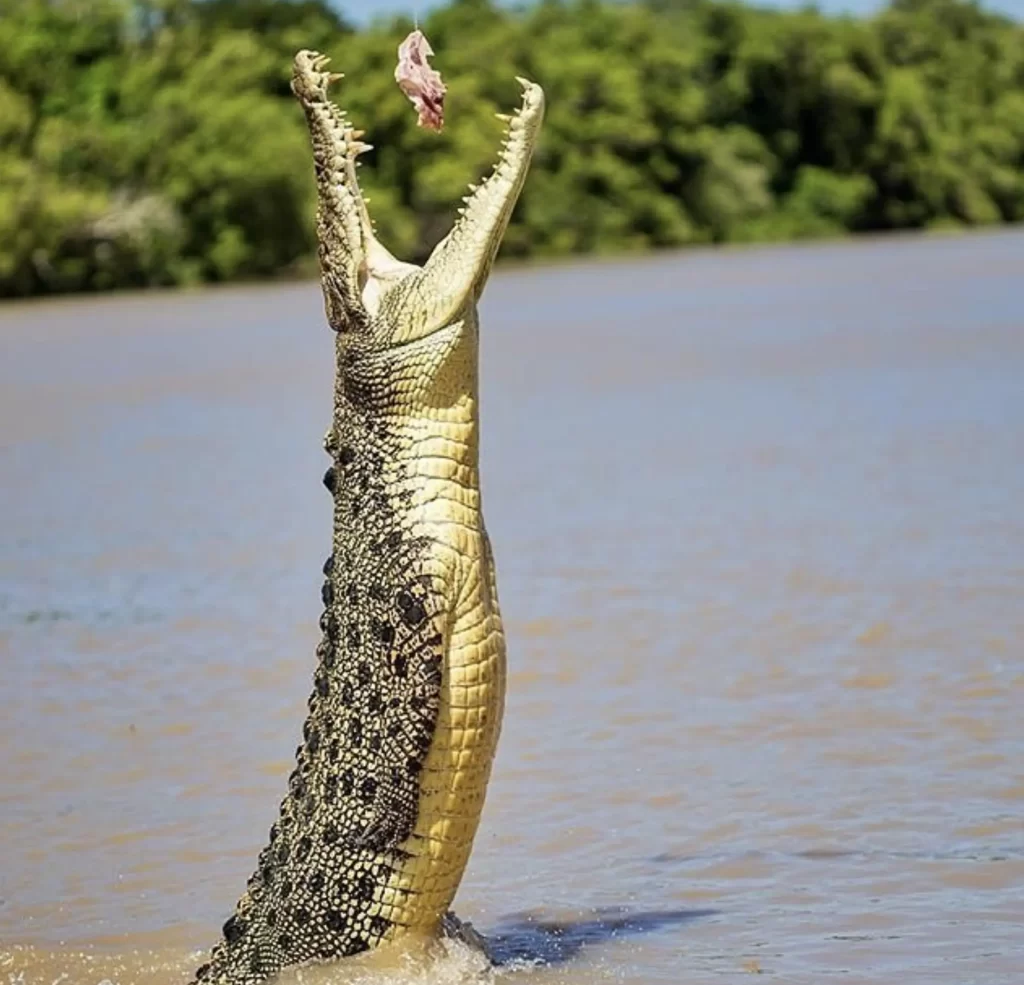
The catapulting action is one of the instances that illustrate the ways in which the crocodiles’ methods of feeding have changed. In nature, the availability of food can be rather limited. This is especially true in the dry season when the water levels are low, and there are few animals to hunt. Due to their ability to leap into the air, crocodiles have more ways of attacking their prey even when it is out of reach.
Crocodiles also stalk and wait till the prey comes within reach and then they attack making use of this strategy. They can thus stay still in the water for many hours, sometimes even days, until an unsuspecting animal comes into striking range. Calmness and stillness are vital traits when seeking prey. This behavior exists in many species such as the Nile crocodile and Cuban crocodile, both of which have similar behavior patterns in capturing prey.
Social Structure and Dominance Hierarchy
Saltwater crocodiles are not typically social animals, but they do exhibit a complex dominance hierarchy, especially during the breeding season. Males are highly territorial and will fiercely defend their territory from other males. The largest and most dominant males will secure the best territories, which usually include prime feeding and nesting grounds. This dominance hierarchy ensures that only the strongest and fittest males are able to breed, passing on their superior genes to the next generation.
In contrast, females tend to be less territorial, though they will defend their nests from potential threats. The dominance hierarchy observed in saltwater crocodiles is also present in other crocodilian species, such as the Cuban crocodile and the American alligator. Understanding these social structures is crucial for wildlife experts, particularly those involved in managing crocodiles in captivity.
Reproductive Adaptations: Ensuring the Survival of Future Generations
Intriguingly, it appears that the life cycle of the saltwater crocodile has features which are in tune with the environment where its breeding takes place. The female crocodiles build nests from mud, vegetation, and some sand where they can lay their eggs. These nests are usually built near water so that when the hatchlings come out, they do not have a problem searching for water bodies. The Nest temperature is an important factor in determining the sex of the offspring. More males are produced in warmer nests while females are the majority producers from cooler nests. This phenomenon of temperature determining the sex of the young ones in animals is evolutionary and serves to regulate high numbers of populations and enhance sustainability Making it easy to control the herd.
As soon as the eggs are laid, the mother of the species sits on the eggs and hatches her head from any discomfort caused. This form of caregiving is not commonly observed among reptiles, but it is quite vital in ensuring that the succeeding generations have a high survival rate. Immediately after the eggs hatch, although mostly actively strong, the mother will pick them up inside her mouth to carry them to the water to prevent them from predators until they are ready to live freely.
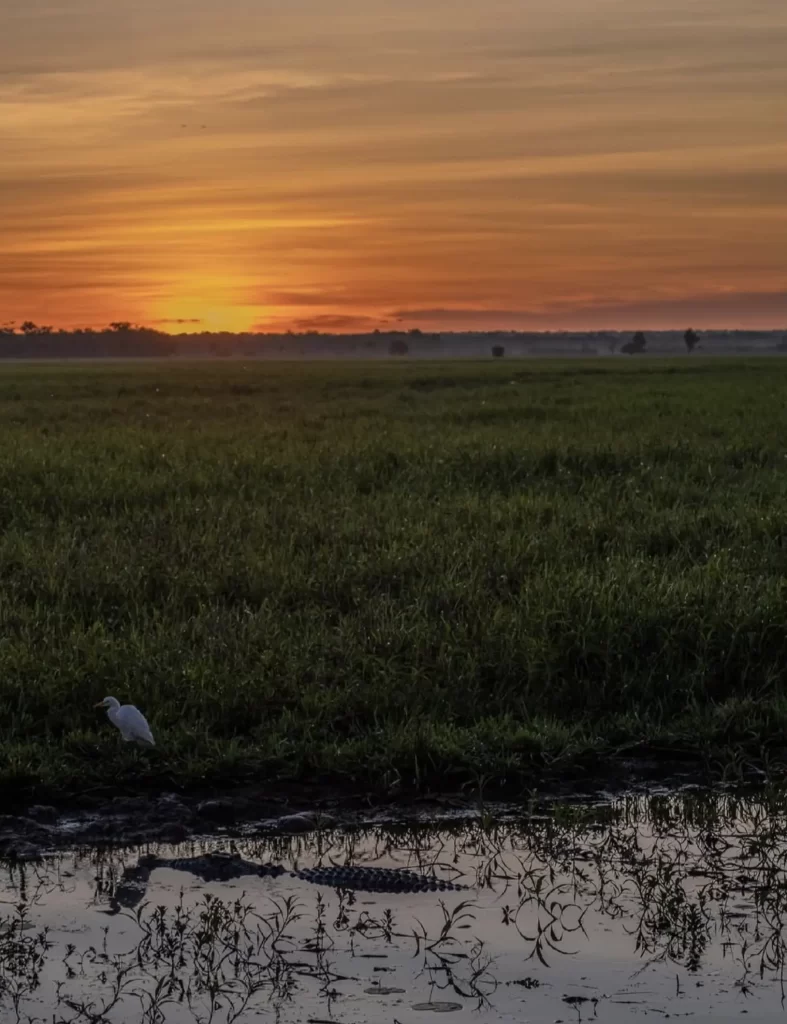
Ecological Importance: Apex Predators of Their Habitat
Saltwater crocodiles, being apex predators, have a great impact on the ecosystems they inhabit. By controlling the number of other fish, birds or mammals, they make sure that no one particular species becomes too numerous and outstrips the rest. This ecological niche is also filled with other apex predators such as the American alligator and Nile crocodile, both of which are also keystone species of their ecosystems.
Such scavenging is beneficial to the ecosystem too as it helps restore the nutrients depleted in dead organisms back to the ecosystem. If these top level predators were removed from any of the ecosystems in which they reside, the food chains would be affected in such a way that some organisms would be in overabundance leading to the collapse of the ecosystem as we know it.
Crocodiles in Mythology and Human Culture
And for ages, crocodiles have occupied a space in cultural and mythological discourses of people. Sociologists, for instance, found out that in Ancient Egyptian culture, crocodiles were considered some of the sacred animals, where their idol/god Sobek was respected as the embodiment of power, victory, and fertility. Likewise, crocodiles are frequently featured in Australian Aboriginal culture through stories and myths as the bearers and guardians of both perilous and wondrous ways of nature.
Crocodiles still hold fascination to this day. Most people have heard of the phrase “crocodile tears,” gone through movies depicting them as beasts and more. These creatures have always been synonymous with strength and endurance.
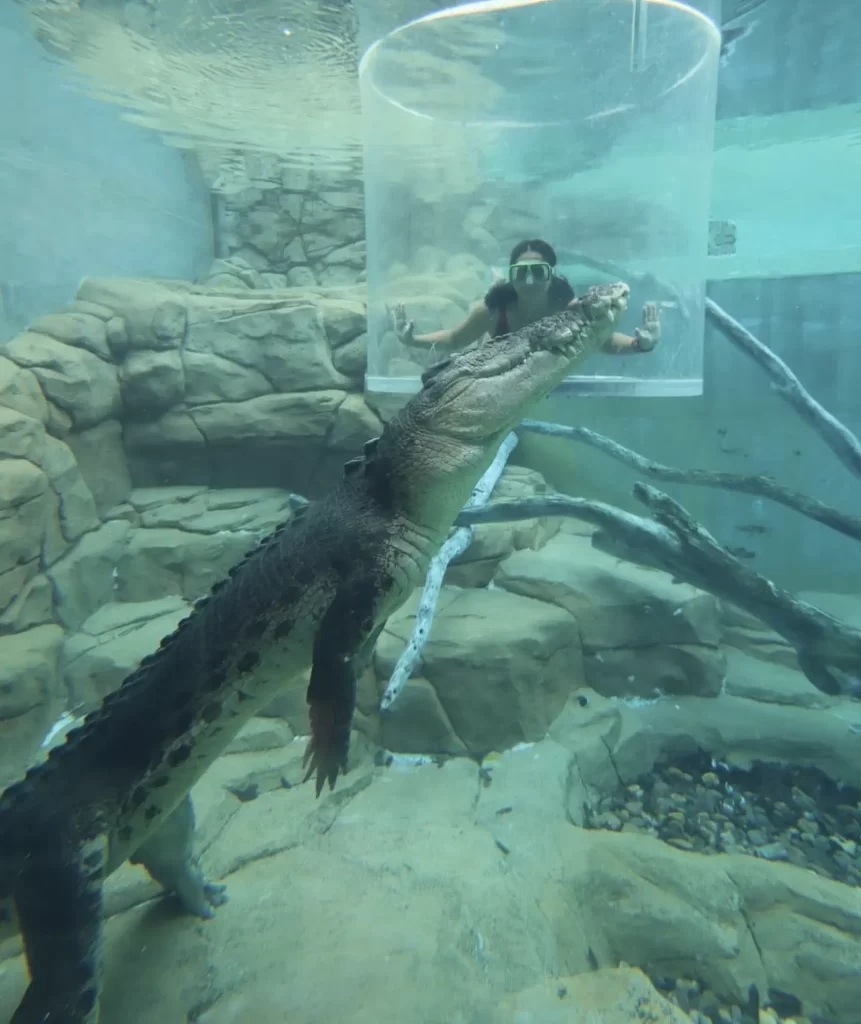
Conclusion
Jumping crocodiles in the water stand in as one of the impressive illustrations of survival in the wild. To advanced antagonistic laad biogeonsois include sexy hunters and their jumpers in sedentary activities like multi domicile systems evergreen definitions have ousted competitive eating globally. Adaptations of the sensory systems, methods employed in hunting and mechanisms of getting by have shown that there are quite a number of ways that these creatures can cope with changes in the environment. As predators that are at the risk of being toppled by other animals, their importance in the maintenance of equilibrium in regions is not overemphasized and that there is a need to secure their habitats.
FAQs
How do crocodiles regulate their body temperature?
Though the other is metabolic regulation of body temperature, crocodiles generally adopt behavioral thermoregulation. A common example of this is definitely basking when there is inadequate heat like the sun or out of the water in water to bring down the heat in cases the surroundings is too hot.
What is the largest species of crocodile?
General dimensions contained the estimated largest crocodiles, which are Saltwater crocodiles (Crocodylus porosus) and exceeding 7 meters in some individuals.
Sensory adaptation allows crocodiles to succeed in hunts. How so?
They have remarkable vision in darkness and sensory pits on the sides of jaws that sense water’s movements, and thus, they can find prey easily.
Are crocodiles social or tend to isolate themselves in groups?
Crocodiles can also be ranked in a pecking order for territories, with the larger crocodiles dominating. They lie on their own but become aggressive with each other when mating season comes.
What role do these reptiles play in the environment?
In terms of prey distribution, the crocodiles, as top level carnivores, help preserve ecological equilibrium by regulating the populations of fish, birds, and mammals within their environment.
